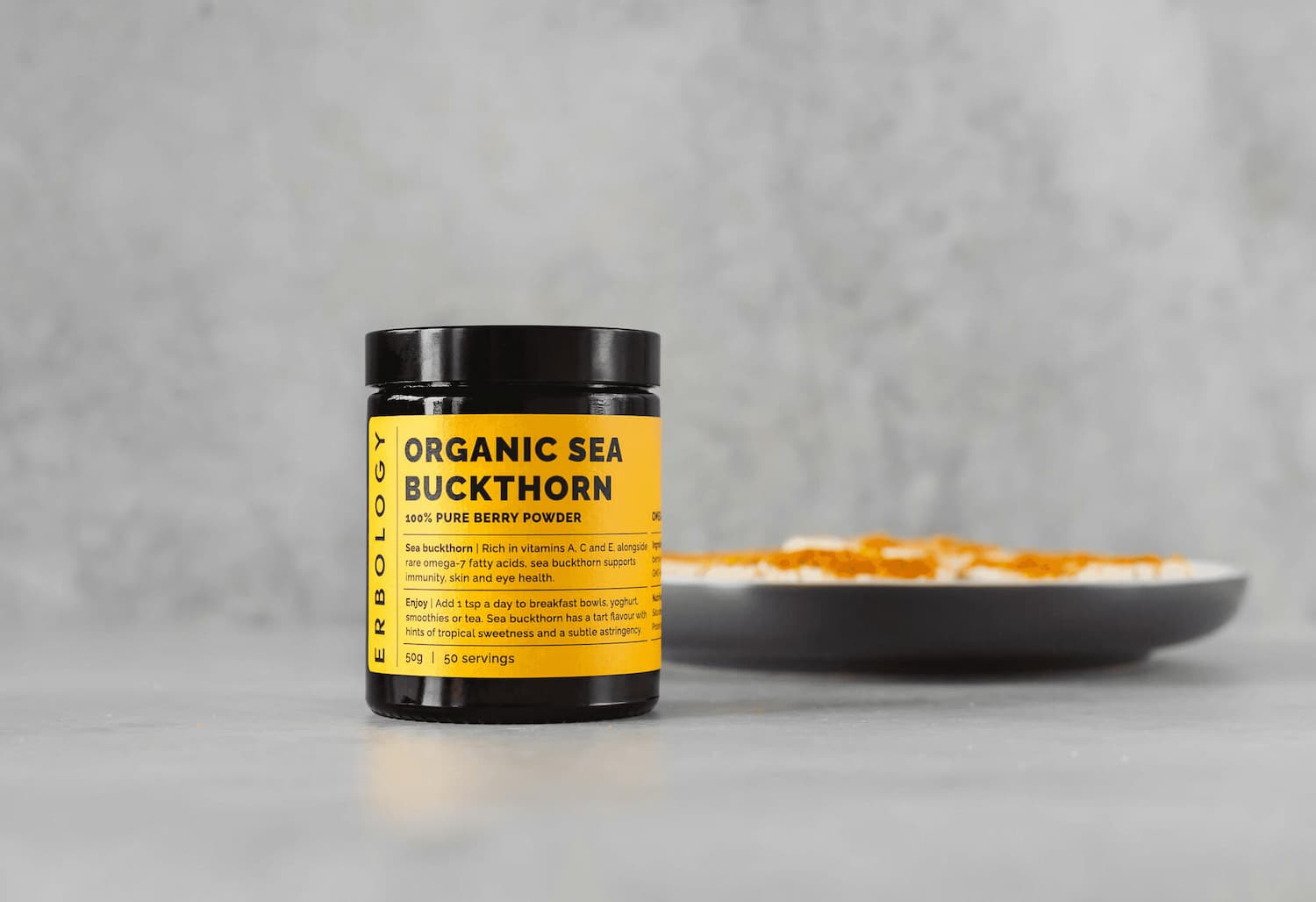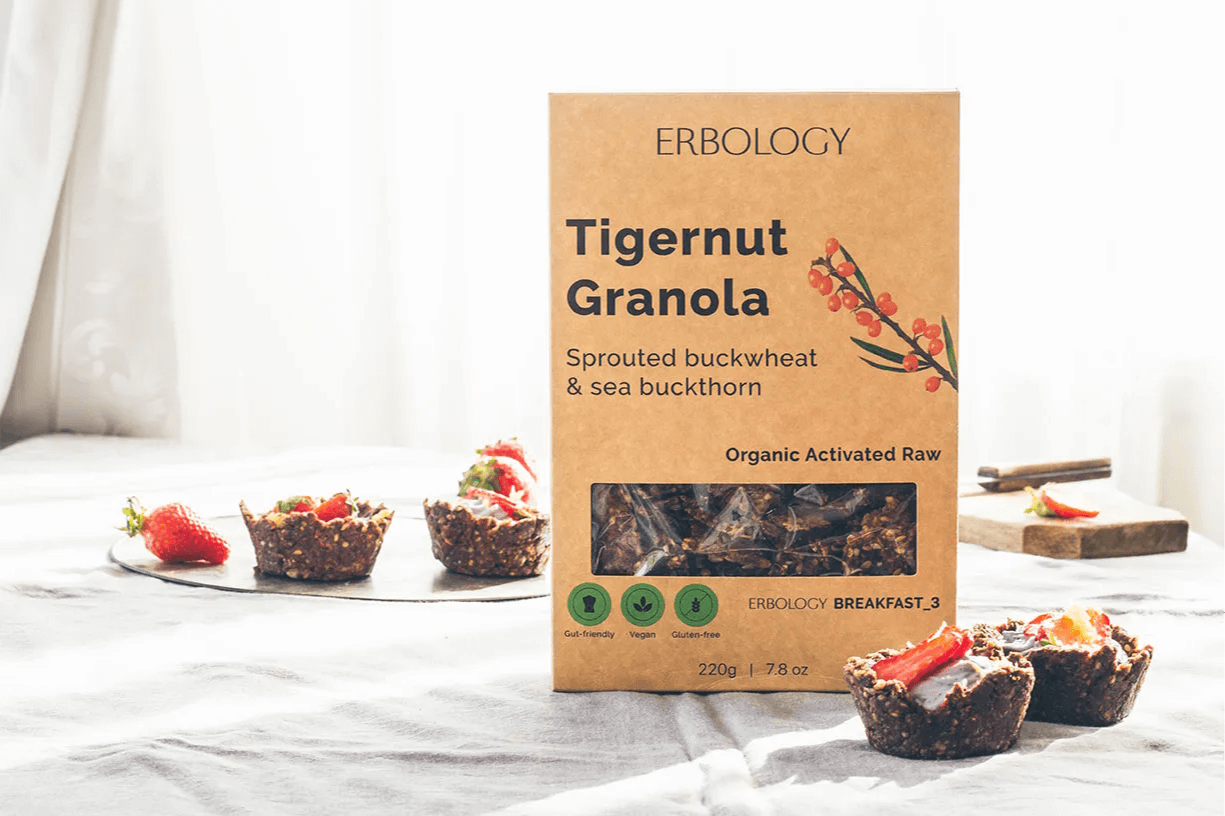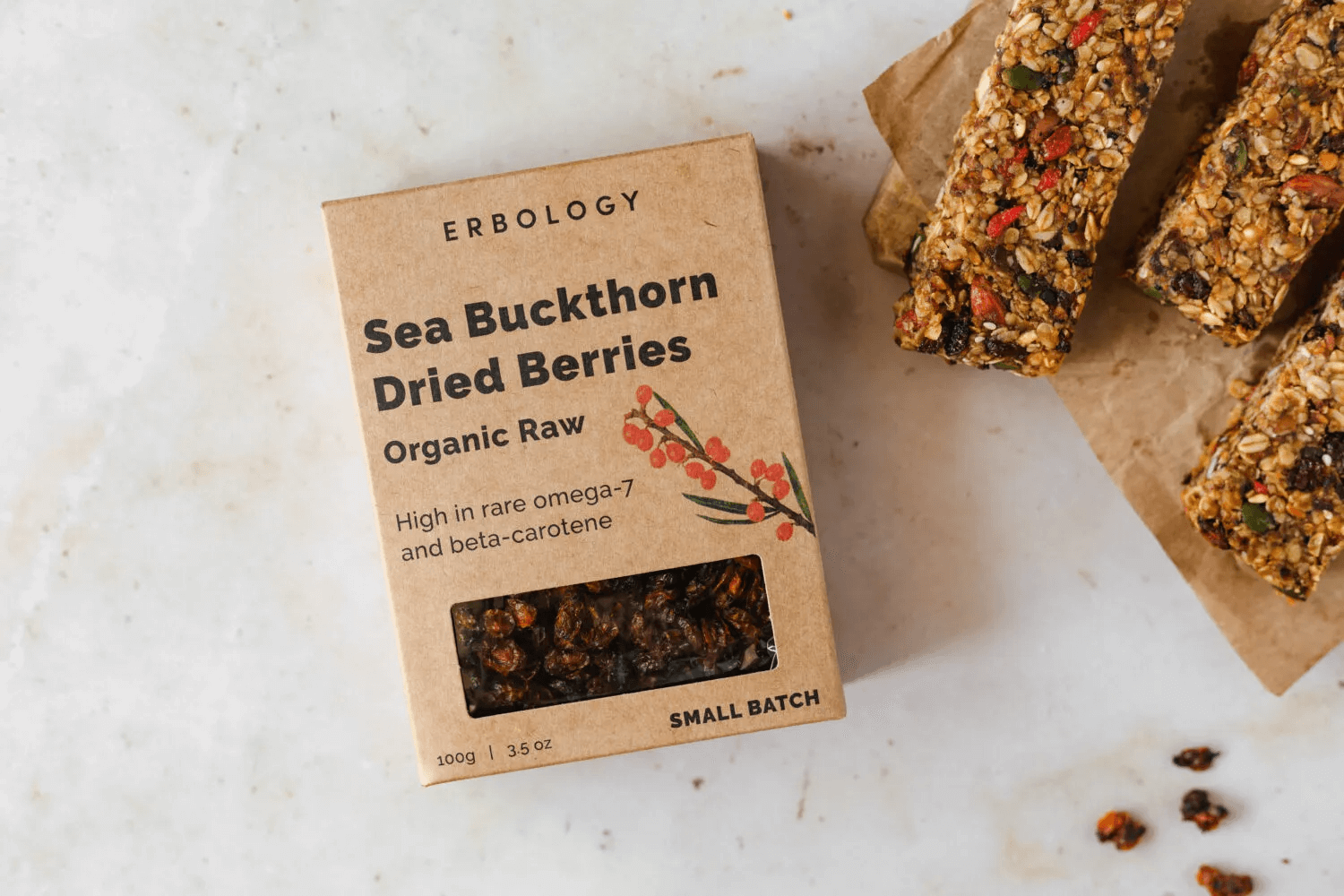18 May 2021
Sea buckthorn skin benefits
What is your skin, and what does it need?
Let us transport you back to the heady days of your high school biology class. As you shake the dust off those memories, you will also undoubtedly start to remember words like ‘subcutaneous layer’ and ‘dermis’. If that’s as far as the memory extends, allow us to give a brief refresher.
The role of our skin is essentially to act as a barrier between the delicate inner functions of our bodies and the outside world. So, whether that’s protecting you from bumps and knocks (and producing beautiful, technicolour bruises in the process) or fending off disease-causing germs, it’s constantly at work.
The three layers of the skin
The skin has three main layers. The top one, which you can see, is the epidermis. The very top layer of your skin consists almost entirely of dead cells, which is quite a thought!
The cells in the epidermis are mostly involved in making keratin. Yes, that’s the same protein which is probably a treasured part of your haircare routine. Keratin is found in both skin and hair and helps provide structure to both.
Lower down, you’ll find the dermis, which is made up mostly of collagen fibres. Another classic skincare ingredient! Collagen is a strong protein which makes your skin tough enough to protect you from the outside world while still stretchy enough to be flexible.
Interestingly, if the dermis becomes very stretched it can tear. The result? Stretch marks.
The dermis is also home to your skin’s blood supply; it’s as far as your capillaries reach.
At the bottom, you’ll find the subcutis, or subcutaneous layer. This is mostly made up of fat and water. Some important hormones are made here, and it also provides a cushion against bumps and blows, protecting your organs.(1)
![]()
The Erbology approach to skincare
Most topical skincare ingredients - with the notable exception of vitamin C - never get past the epidermis. However, according to the founder of beauty brand Silk Therapeutics, Greg Altman PhD, that’s not really a cause for concern.
Non-penetrative ingredients “seal the skin and give a hydrating effect, and when you do that, then everything happening underneath is very happy,” he explained in an interview with The Cut.(2)
That said, you also need to strike a careful balance between ‘sealing’ the skin so it can stay hydrated, and blocking your pores, which can lead to breakouts.
Pores, claims Dr Greg, are one way channels which take sweat and sebum out of the body. “Any time we put things in pores, we end up in trouble,” he says.
However, there’s a whole lot more to skin health than just sealing it up from the outside. To do all the work of healing wounds, generating new cells, producing keratin and other proteins and dealing with uninvited pathogens, it needs energy and nutrients. Those must come from your diet.
But what about ingredients that can nourish skin from the outside and the inside? Now, you’re starting to get a feel for why we love sea buckthorn so much!
Using sea buckthorn oil for skin
The most common way that people use sea buckthorn in skincare is by applying the oil topically, so let’s begin our investigations there.
(A note: sea buckthorn oil has a vibrant orange hue which some people find a bit alarming at first glance, and it can also stain light-coloured fabric. If you’d like to use it topically, apply before bed and sleep on a dark coloured pillow case. Alternatively, you can dilute it in a non-comedogenic carrier oil to tone the colour down a bit!)
Sea buckthorn oil is found naturally in the berry. At Erbology, we cold-press sea buckthorn berries to extract their oil. Cold-pressing means that the valuable nutrients within are preserved (whereas heat may damage them).
Our sea buckthorn oil is food-grade and many of our customers use it to nourish their bodies through their diet (more on that below). However, it’s also an excellent natural skincare ingredient. What’s more, it works brilliantly as a standalone facial oil; no need to blend with other ingredients to see effects.
The first thing to mention is that, as an oil, it contains lipids which ‘seal up’ the skin, as Dr Greg advised. This helps enhance your skin’s protective barrier.
Pure sea buckthorn oil contains omega-7, also known as palmitoleic acid, which plays a role in helping the epidermis to create new cells, and in wound healing.(3)
It also soothes skin burns (such as sunburn) and skin problems such as bedsores and chafing.(3)
Gamma linoleic acid: the skincare hero you’ve never heard of
Sea buckthorn oil is particularly high in gamma-linoleic acid (GLA).
GLA is vital to create the ‘glue’ that sticks your epidermis cells together (officially called intercellular cement), to make cell membranes and improves blood circulation to the skin. This in turn improves the amount of nutrients and oxygen delivered to your skin cells and helps you flush away any nasty toxins. The result? Your skin structure, appearance and tone all improve.
Interestingly enough, GLA also manages to squeeze past your epidermis and make it into the lower layers of your skin. There, it gets converted into prostaglandins, which are special lipids involved in inflammation and healing.
According to one study, this means that GLA protects against infections, allergies, inflammation, and even slows down the ageing process.(2)
Other good stuff in sea buckthorn oil
Sea buckthorn oil is also a good source of beta-carotene, which our bodies convert into vitamin A. This, scientists believe, is what gives sea buckthorn oil regenerative and anti-wrinkle properties.(2)
In our modern lifestyle, where we regularly pay a fortune for complicated, lab-developed skincare, it’s hard to believe that something so natural can work so hard for our skin.
Besides, how many skincare ingredients can you eat, as well?
Related reading
![]()
undefined

Organic Sea Buckthorn Juice

Organic Sea Buckthorn Powder

